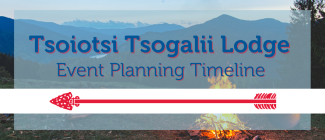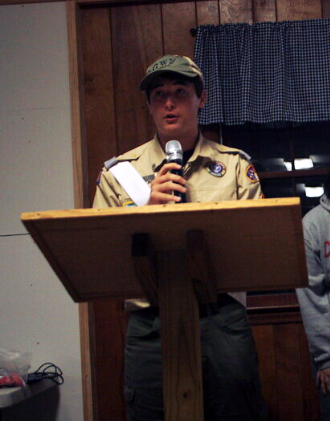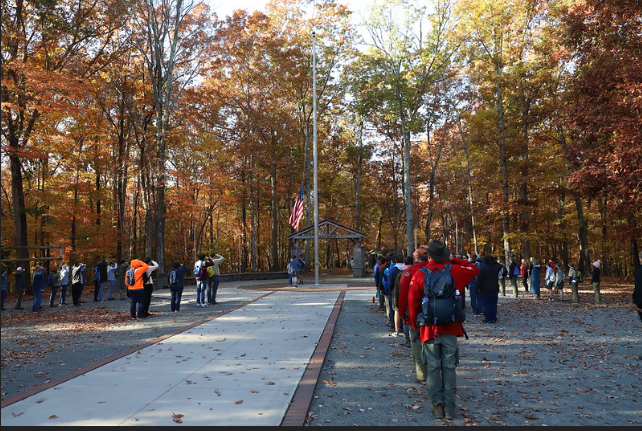
Event planning is a necessary skill every lodge officer will need throughout their leadership journeys in Order of the Arrow and Scouting because events are critical to an effective youth-led Scouting program. This skill is also transferable to leadership roles in other organizations, personal and business ventures, and even the workplace. All the pre-planning required for larger events allows for the acquisition of proper time management and planning skills.
Nic “Texas” Fillippa, the former lodge chief and vice chief of program for Tsoiotsi Tsogalii Lodge in North Carolina, has years of experience planning events when he was the youth Arrowman tasked with planning his lodge’s fellowship events.
Develop a Vision
Nic’s number one tip for planning an event is that it is essential to have a vision of the event and goals of what you want to achieve at the event. Every event has a different timeline for planning based on the type of event, the event’s level of complexity, and whether there is an existing framework for the event or not.
“Having the end goal in mind is the key to planning anything,” Nic stated.
Use SMART Goals
Building this vision and starting the planning process is made possible by using SMART goals and mapping out what you, as a planner, want the event to look like for Arrowmen. SMART goals are specific, measurable, attainable, relevant, and timely. Nic orients his goals by referencing similar past events, especially those similar in style and size. Another way he accomplishes this task is through collaboration with past lodge leaders and other lodges in his section. His advice when planning an event is to not be afraid to take lessons and inspiration from other lodges.
Start, Stop, Continue
One of Nic’s favorite tools when planning recurring events is the “Stop, Start, Continue” method. This method is great for recurring events because it allows the lodge to examine what they want to stop doing at events, whether it is that aspect isn’t being done well or doesn’t positively impact the event. Then they identify what they want to start doing at events. These may be ideas drawn from outside inspiration or ideas brought up by Arrowmen within the lodge that are experiencing the event. Finally, they look at what is working well and want to continue. This process is used as a way to both generate new ideas, as well as re-evaluate the existing image and program of events that have already happened. He says this allowed his leadership team to improve event quality.
“The main goal of this process is to improve the quality of the event,” reflected Nic.
Spread the Work Evenly
Nic also stressed that idea creation should not solely rest on an individual Arrowman or the leadership team when planning an event. There are advisers, friends, and Arrowmen throughout the lodge who would be more than happy to give ideas. It is essential to reference advisers for their knowledge of safety and logistics, in line with Youth Protection training standards and the Guide to Safe Scouting.
Divide and Conquer
The next part of the event planning process after having a vision for the event is to start breaking up the tasks needed to make the event happen because the only way to eat an elephant is in small bites. Some tasks that may need to be accomplished include finding volunteers to help run the event and creating a contingency plan. Delegating tasks is something he did with his team to ensure the event was successful, manageable, and enjoyable for staff and participants. He emphasized that staff enjoy the event because otherwise, it may be challenging to recruit staff. Staff members are Arrowmen like everyone else and want to have fun at events as well. Tsoiotsi Tsogalii Lodge uses a shift system so every staff member can enjoy the event.
“We never make Arrowmen work the entire event, so they can both have a good time and be on staff,” commented Nic.
Conduct Rehearsals
Teamwork is vital when planning an event, such as a fellowship or induction event. He also explained that before the event, he tries to walk through every detail of the event with his team, from when the Arrowmen arrive to when they leave. When it’s done in-depth, it comes in handy to identify issues and improve the event experience before anyone even arrives at the camp. Nic “plans from the mind of an attendee.” This helps him connect better to everything happening at the program and why someone should want to participate in the program in the first place.
Tsoiotsi Tsogalii Lodge and its leadership team do all these things to make events even better! Nic cites the “Stop, Start, Continue” method, collaborating with many different peoples for event ideas and execution, proper planning, and a complete walkthrough to make an event successful for Tsoiotsi Tsogalii Lodge.


